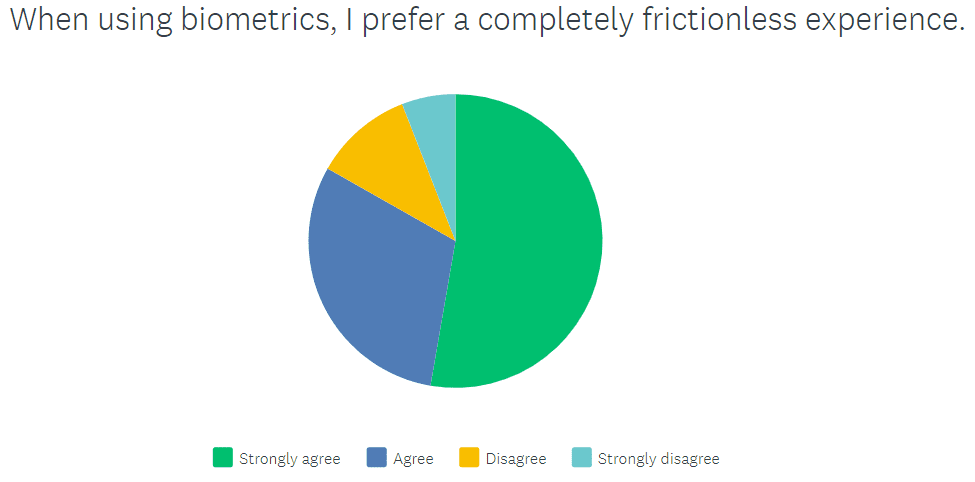So far in our analysis of the results from FindBiometrics Year in Review survey, we’ve seen the various ways in which COVID-19 has directly or indirectly disrupted the industry in 2020. Contactless modalities prevailed as fingerprint scanning dropped in popularity; healthcare broke into the top three application area rankings; and there was a spike in interest in biometric solutions for traveler screening, to name a few examples. But today, we’re going to delve into a trend that remained stable: the popularity of low-friction authentication.
Question 24 of the survey asked whether participants agreed with the statement, “When using biometrics, I prefer a completely frictionless experience.” A strong majority of 83 percent agreed, with over half – 52.7 percent – saying that they ‘strongly agree’.

In this context, “friction” refers broadly to the amount of effort needed from the end user during a given transaction. It can also be thought of as the difficulty involved in a transaction. For example, unlocking a smartphone with a quick face scan is very low-friction, since the user needs only to look at their device in order to authenticate; but adding passcode entry to that process would increase the friction involved.
Trying to remember a username and password combination that you haven’t used in two months: that would be high-friction.
Naturally, people like low-friction transactions. They liked them even more in 2020, with the 83 percent majority being slightly higher than the 82 percent who agreed with the statement in last year’s survey, and the 81 percent who agreed in the FindBiometrics Year in Review 2018 survey.
Given that kind of easy-to-understand enthusiasm, who doesn’t prefer a completely frictionless experience? Arguably, those who are particularly security-conscious are the ones who tend to worry about this kind of user experience. No friction means that a malefactor who obtains the right credentials can get unauthorized access to an account that much more easily.
And for highly sensitive transactions, one might actually want the authentication process to be somewhat onerous. Even the most convenient biometric onboarding solutions used by banks, for example, require end users to upload images of themselves and their official identity documents – a process that has a lot more friction than just looking at a phone in order to unlock it.
Notably, there was a significant jump in the number of Year in Review respondents who ‘strongly disagreed’ with the completely frictionless preference in the 2020 Year in Review. The year before, only three percent strongly disagreed, whereas in the most recent survey that jumped to almost six percent.
Here, we might once again be seeing one of the ripple effects of the pandemic. As we’ve observed before, social distancing and lockdown measures pushed various organizations and end users into digital channels in 2020, resulting in many hasty deployments of remote authentication mechanisms – and plenty of concern about expansive attack surface open to cybercriminals and fraudsters. The near-doubling of respondents who ‘strongly disagree’ with the preference for completely frictionless biometric authentication may reflect these heightened concerns.
That’s probably a healthy thing, as it indicates a growing awareness of the security threats that persist online even as biometric authentication becomes more commonplace. But it won’t counteract end users’ preference for low-friction experiences, which is in itself a positive trend for biometrics vendors offering increasingly sophisticated authentication solutions that can both heighten security and reduce friction in online authentication and onboarding.
*
The 2020 FindBiometrics Year in Review is made possible by our sponsors: Aware, BioConnect, FacePhi, Innovatrics, Jumio, NEC Corporation of America, and Onfido.
–
February 11, 2021 – by Alex Perala







Follow Us